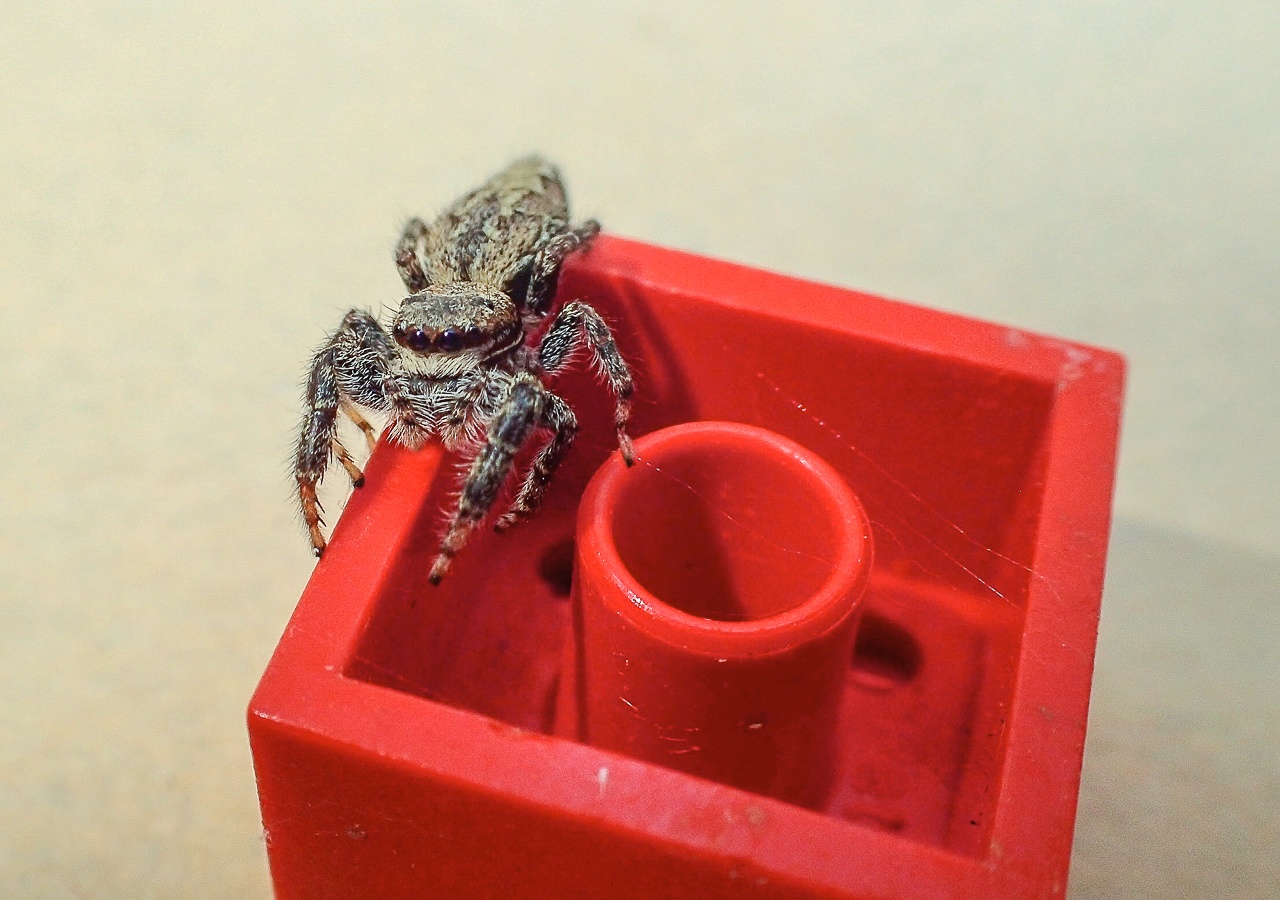Different animal species have different cognitive abilities - they may for example be good or bad learners. The reasons for those differences, however, are often unknown. The social and physical environment that an animal lives in can potentially influence cognitive abilities. Living with conspecifics in socially organized species may require more complex brains - for example, in order to differentiate between friend and foe. On the other hand, orientation in structurally complex habitats may require more detailed perception or more extensive learning and sophisticated reaction abilities.
Scientists from the Universities of Hamburg and Greifswald investigate whether social and physical environments affect learning ability and contact with conspecifics in jumping spiders. With the use of microscopic techniques, they test if different conditions also cause changes within the brain.
The biologists chose the largest local jumping spider, Marpissa muscosa (photo 1), for their experiments. These animals are known for their extraordinary cognitive abilities and their tolerance towards conspecifics. The spiders were reared in three different environments: enriched with objects (photo 2), without objects, and together with conspecifics.
The scientists found out that spiders that were reared in groups learned faster where to find a food reward that was hidden in a maze (film 1). The response of spiders to their mirror image, which they treat as a conspecific, was tested as well. Spiders that were reared in groups were the least aggressive towards conspecifics (film 2).
The brains of spiders reared under different conditions were analyzed using micro computed tomography (microCT). Animals that grew up in an enriched environment showed the strongest exploration tendency. Their brains show a larger “arcuate body,” a region that probably plays a role in locomotion control.
The results of these investigations show that physical and social environmental conditions have a strong impact on the development of brain and behavior.
Further Information
Article 1: Social makes smart: rearing conditions affect learning and social behaviour in jumping spiders – in: Animal Cognition November 2017, Volume 20, Issue 6, pp 1093–1106
Article 2: Early environmental conditions affect the volume of higher order brain centers in a jumping spider - in: Journal of Zoology Volume 303 Issue 2 Issue Publication: October 2017
Film 1: A Marpissa muscosa during a learning trial. A reward is hidden behind the yellow obstacle. - Film: Jannis Liedtkehttps://www.youtube.com/watch?v=-fCL9S4CMzk
Film 2: A Marpissa muscosa reacts in a mirror experimentto its mirror image similarly to a conspecific. - Film: Jannis Liedtke https://www.youtube.com/watch?v=iL6zfWUznUw
The photos can be downloaded and used for free for editorial purposes in combination with this media release. The copyright owner of the photo must be named. Download
Contact at the University of Greifswald
Zoological Institute and Museum
General & Systematic Zoology
Philip O.M. Steinhoff
Loitzer Straße 26, 17489 Greifswald
Tel.: +49 3834 420 4281
philipsteinhoffgmailcom
Profil ResearchGate
Profil Twitter
Prof. Dr. Gabriele Uhl
Tel.: +49 3834 420 4242
gabriele.uhluni-greifswaldde
Contact at the University of Hamburg
Biocenter Grindel
Behavioural Biology
Dr. Jannis Liedtke
Martin-Luther-King Platz 3, 20146 Hamburg
Tel.: +49 40 42838 - 7894
jannis.liedtkeuni-hamburgde
Prof. Dr. Jutta M. Schneider
Tel.: +49 40 42838 - 3878
jutta.schneideruni-hamburgde


